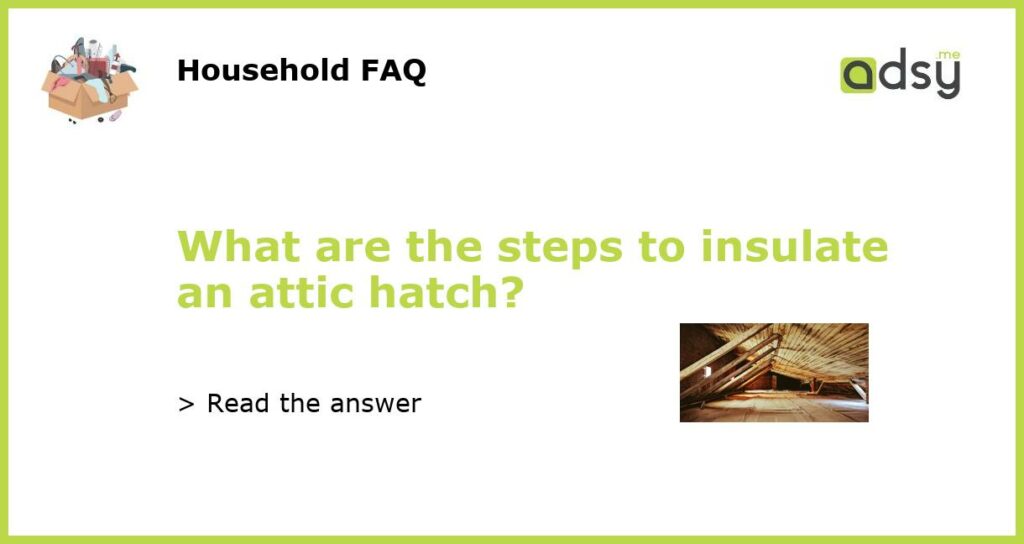Insulating your attic hatch is an important step in ensuring energy efficiency and maintaining a comfortable living space. The attic hatch is often a major source of heat loss in many homes, as it provides a direct connection to the unconditioned space above. By properly insulating your attic hatch, you can prevent air leakage, reduce energy consumption, and improve overall home comfort. Here are the steps to insulate an attic hatch.
1. Measure and prepare the materials
The first step in insulating your attic hatch is to measure the dimensions of the opening. This will help you determine the amount of insulation material you will need. Common materials used for attic hatch insulation include rigid foam board, fiberglass insulation, and weatherstripping.
2. Install weatherstripping
Weatherstripping is an essential component in preventing air leakage around the attic hatch. Apply weatherstripping along the edges of the hatch and the frame to create an airtight seal. This will help to eliminate drafts and maintain a consistent indoor temperature.
3. Install insulation material
There are several options for insulation material when insulating an attic hatch. One popular choice is to use rigid foam board insulation. Cut the foam board to fit the dimensions of the attic hatch and secure it in place using adhesive or tape. Another option is to use fiberglass insulation batts. Cut the batts to fit the desired dimensions and place them inside the attic hatch frame. Make sure the insulation material is tightly packed to prevent air leakage.
4. Create a hatch cover
To further increase the insulation value of the attic hatch, you can create a hatch cover. This involves constructing a box-like structure that sits on top of the hatch when it is closed. The hatch cover can be made from plywood or foam board and should be insulated on all sides. Attach the cover to the ceiling using hinges, so it can easily be opened and closed when accessing the attic.
5. Insulate the attic access door
In addition to insulating the attic hatch, it is also important to insulate the access door leading to the attic. Apply weatherstripping along the edges of the door to create an airtight seal. Insulate the door with the same material used for the attic hatch, such as rigid foam board or fiberglass insulation. This will prevent air leakage and ensure consistent insulation throughout the attic.
By following these steps, you can effectively insulate your attic hatch and reduce heat loss and air leakage. Insulating the attic hatch is a relatively easy and cost-effective way to improve energy efficiency in your home. It is an important step in achieving optimal insulation throughout the entire home. Take the time to properly insulate your attic hatch to enjoy the benefits of improved comfort and lower energy bills.
Insulating your attic hatch is a simple yet effective way to improve energy efficiency and maintain a comfortable living space. By properly sealing and insulating the attic hatch, you can prevent air leakage, reduce heat loss, and increase overall home comfort. Follow the steps outlined above, and you will be well on your way to a more energy-efficient home. Don’t forget to use appropriate insulation materials and weatherstripping to ensure an airtight seal. By taking these steps, you can save on energy bills and create a more comfortable living environment.

